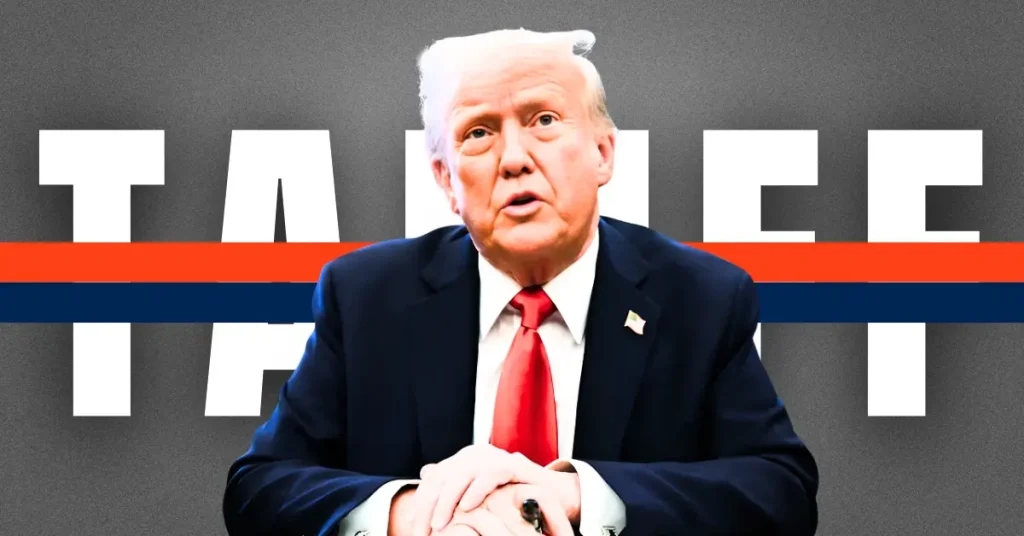Trump’s Tariffs Send Shockwaves Through Crypto—Traders Scramble for Safe Havens
Trade wars aren’t just for soybeans and steel anymore. The latest round of Trump-era tariffs is rattling crypto markets, with Bitcoin volatility spiking 30% since the policy dropped. Here’s the damage—and where smart money’s hiding.
Tariffs Meet Tokenomics: A Collision Course
When traditional markets flinch, crypto usually dances. Not this time. The new 15% levy on Chinese tech imports has crypto miners dumping hardware—and Tether volumes mysteriously doubling. Coincidence? The SEC thinks not.
DeFi’s Dirty Little Tariff Hack
Decentralized exchanges are quietly feasting on the chaos. Uniswap volume just hit $5B daily as traders bypass traditional FX channels. ’It’s the perfect storm of regulatory arbitrage,’ quips a hedge fund manager—between bites of his $50 artisanal sandwich.
Wall Street’s playing catch-up while crypto eats its lunch—again. Some things never change.

In early April, U.S. President Donald Trump imposed new import tariffs targeting countries with the largest trade surpluses with America. The impact was immediate—between April 2 and 8, the total crypto market cap plunged by.
As global trade tensions rise, tariffs are no longer just an economic weapon. They’re becoming a major source of volatility across financial markets—crypto included.
Here’s how tariffs affect the crypto space and what investors should watch.
What Are Tariffs?
Tariffs are, used by governments to protect domestic industries from foreign competition. For example, if the U.S. imposes a tariff on steel, foreign steel becomes more expensive, giving local producers a pricing edge.
How Tariffs Disrupt the Global Economy
Tariffs are risky tools that often:
- Retaliation: After Trump’s recent tariff announcement, China immediately imposed counter-tariffs, escalating trade tensions.
- Consumer Cost: Importers usually pass tariff costs to consumers, fueling inflation.
- Supply Chain Disruption: Industries that rely on global imports—like tech and manufacturing—suffer the most.
- Trade Slowdown: Tariffs curb international trade, dampen global growth, and create prolonged uncertainty.
Tariffs and Their Ripple Effect on Crypto Markets
Investors tend to exit risky assets like crypto during uncertain times, shifting to Gold or U.S. bonds. This risk-off behavior drives crypto prices down.
Tariffs often trigger inflation. In response, central banks may hike interest rates—tightening liquidity and choking the capital FLOW into volatile assets like crypto.
Following Trump’s tariffs, crypto markets saw an 11.63% decline in under a week. Sharp sell-offs often accompany these announcements due to fear and reduced investor confidence.
Crypto mining depends on global hardware imports. Tariffs raise costs for miners, potentially impacting network security and decentralization.
Hidden Opportunities for Crypto
In countries experiencing currency devaluation from tariff-induced inflation, users often turn to stablecoins to preserve value—boosting adoption.
Tariff news causes market swings. Traders exploit this with strategies likeand, profiting from volatility on both sides.
Final Take
Tariffs may not directly target crypto, but their. From spiking inflation to supply chain disruptions, they inject fear and reduce liquidity—conditions that typically stall crypto market growth. However, for stablecoins and savvy traders, tariffs can also present strategic opportunities.
FAQs
Why did crypto prices drop after Trump’s tariff move?The tariffs sparked global tension and fear, leading to an 11.63% crypto market cap drop as investors fled riskier assets.
Are there any benefits of tariffs for crypto?Yes, tariffs can boost stablecoin use in inflation-hit economies and create profit opportunities through volatility trading.
Can tariffs cause inflation that impacts crypto markets?Yes, tariffs can fuel inflation, prompting rate hikes that reduce liquidity and hurt crypto investment flows.

